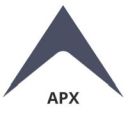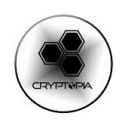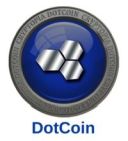Blockchain platforms aim to do more than provide cryptocurrency investment. They offer a decentralized apps (dapps) environment powered by their own tokens, creating real-world use cases that range from web applications to payment systems and prediction markets.
Long-term stability can be a problem for some of these dapp platforms, especially if new features are rolled out via hard fork on a regular basis. Ubiq aims to provide an alternative to the ever-changing nature of blockchain projects by creating a stable and secure environment users can rely on for years.
Ubiq has its eye on long-term usability. The platform launched in January 2017 and has enjoyed steady but careful progress ever since. A few token projects have appeared since then, some resulting from partnerships with larger businesses, and a few because a handful of Ubiq users had too much time on their hands.
Here we highlight some projects on Ubiq that caught our eye.
UBQ
 UBQ is Ubiq’s main coin, an ERC-20 token that’s traded on 4 main exchanges, including Bittrex and Cryptopia. Its main purpose is paying transaction fees on the network, though it does tie in with ESCH for governance purposes, as explained below.
UBQ is Ubiq’s main coin, an ERC-20 token that’s traded on 4 main exchanges, including Bittrex and Cryptopia. Its main purpose is paying transaction fees on the network, though it does tie in with ESCH for governance purposes, as explained below.
UBQ reached an all-time market cap high in December 2017 when it broke through to #98. The token’s value has remained low, and tends to rise and fall with the tide of the overall market, so it’s not high on most traders’ investment lists. But, as many of Ubiq’s community have noted, Ubiq is a long-term project with long-term value, so UBQ is the kind of cryptocurrency you hold onto for a while.
ESCH

Escher forms the heart of Ubiq’s token economy. It’s described as a “tool for governance,” a token holders can use to vote on developmental resource allocation, group project proposals, and new network features. The voting contract itself was based on District0x with a few modifications.
The Ubiq team doesn’t plan to list ESCH on exchanges. Instead, holders of UBQ will receive Escher tokens via airdrop once per quarter for a total of 8 distributions. The first release was in April 2018, with UBQ holders receiving 12 ESCH for every 1 UBQ. This will decrease to 6, 3, and 2 in subsequent drops, and then a 1:1 ratio in the final 4 drops.
Escher’s value isn’t in monetary profit, but in voting power. Companies heavily invested in the Ubiq platform will benefit enormously from holding large amounts of ESCH, as it essentially allows for quality control to ensure Ubiq grows in a stable direction that benefits their business.
GEO
 GEO aims to combine geocaching with cryptocurrencies, adding digital rewards to real-world treasure hunts. It’s a unique use case for an altcoin, and since the team switched GEO to the Ubiq platform in 2018, some intriguing new features have appeared on the roadmap.
GEO aims to combine geocaching with cryptocurrencies, adding digital rewards to real-world treasure hunts. It’s a unique use case for an altcoin, and since the team switched GEO to the Ubiq platform in 2018, some intriguing new features have appeared on the roadmap.
GEO will eventually transition to a proof-of-location (PoL) mining model. New coins will be discovered only if users are in a specific location with their GEO mobile app. The more someone travels and uncovers caches, the more GEO coins he or she will mine.
At the time of writing, GEO is still somewhat scattered. PoL has yet to be implemented, and the mobile apps are nonexistent. Finding caches, which can include small GEO payments or physical GEO coins, requires manually looking for them on the geocoin.cash website, confirming via an external site, then going back to enter wallet details separately. It’s a work in progress, but the team is hopeful the move to Ubiq will streamline development.
The idea behind GEO isn’t to make anyone rich – it’s simply to encourage more people to get out and explore. Tying in a physical coin to stash along with cryptocurrency transactions gives it a fresh angle, and once the mobile apps and PoL features launch, GEO could be a truly unique experience.
APX
 APX Ventures is a blockchain solutions company that offers consulting services along with sales and deployment of cryptocurrency mining hardware. It launched a successful ICO in Q2 2017 that raised over $2.7 million, making it one of the earliest and most successful projects in the Ubiq ecosystem.
APX Ventures is a blockchain solutions company that offers consulting services along with sales and deployment of cryptocurrency mining hardware. It launched a successful ICO in Q2 2017 that raised over $2.7 million, making it one of the earliest and most successful projects in the Ubiq ecosystem.
The APX token itself is supported by APX Ventures via a buy-back and burn program to keep the supply trim and the coins valuable.
CEFS
 CEFS is an exchange token for the New Zealand-based Cryptopia. It works in much the same way as the Binance and KuCoin exchange tokens, by offering fee discounts and fee share rewards based on the number of shares stored in your account.
CEFS is an exchange token for the New Zealand-based Cryptopia. It works in much the same way as the Binance and KuCoin exchange tokens, by offering fee discounts and fee share rewards based on the number of shares stored in your account.
As an extension of the Cryptopia–Ubiq relationship, the exchange is set to move its NZDT token to Ubiq’s platform in the near future. NZDT functions like Tether (USDT) does for US dollars, pegging an easy exchange ratio for cryptocurrencies to and from New Zealand dollars.
QWARK
 The QWARK token is an Ubiq-based project tied to Infinitum Flame’s physical cryptocurrency payments service. The end goal is to allow users to load a card with digital currency via Qwark, then swipe it at any terminal that accepts debit card payments.
The QWARK token is an Ubiq-based project tied to Infinitum Flame’s physical cryptocurrency payments service. The end goal is to allow users to load a card with digital currency via Qwark, then swipe it at any terminal that accepts debit card payments.
Both Infinitum Flame and Qwark are still in the early stages of launch, though some cards have shipped to early supporters for testing.
DOT
 Dotcoin is a currency first launched by Cryptopia in 2014. A relaunch in 2017 moved the token to the more secure Ubiq platform and rebranded it as Dotcoin DOT. The old DOT has since deprecated to almost no value, but Dotcoin DOT remains a player on Cryptopia’s internal lotteries, giveaways, and tipping system.
Dotcoin is a currency first launched by Cryptopia in 2014. A relaunch in 2017 moved the token to the more secure Ubiq platform and rebranded it as Dotcoin DOT. The old DOT has since deprecated to almost no value, but Dotcoin DOT remains a player on Cryptopia’s internal lotteries, giveaways, and tipping system.
Community Tokens
One of the markers of a good investment coin is the strength of its underlying community. Are they passionate about the project itself or just looking for a strong ROI? Do they actively engage with the platform or just swap coins back and forth?
Ubiq’s community is small but dedicated. They show this through constant funding support and regular interactions with newbies to the scene, but they also contribute by enlivening the token economy with a few unusual projects.
First, let’s talk about 10grans, one of the strangest tokens on any blockchain platform. What is a 10grans, you ask? Why it’s one GRANS, of course. This tongue-in-cheek project arose as a riff on blockchain hysteria in much the same way as Dogecoin. It’s FUNgible (mutually fun), has a limited supply, is powered by imagination, and features a conversion rate of 10x, which is convenient for doing math in your head. Ways to actually use 10grans are coming soon, so in the meantime, just enjoy the jolly old hype.
Another oddity of a token, BEER was deployed by the Ubiq team to help raise funds for Ubiq support on the Ledger hardware wallet. A donation of 25 USD earned a user a single BEER token. If the holder met an Ubiq team member or participating community member in person, they could hand over said token in exchange for a real-life beer. A limited supply of 8,888 BEER was generated, but there’s no word on how many actual beers have been exchanged as a result.
Tokens like 10grans, BEER, or the truly bizarre and practically non-existent PickleRicks (RICKS), have very little use in the real world. They do show how dedicated the community is to Ubiq, and their willingness to have some fun with the platform, which is a good indicator of its future potential.
Ubiq’s Future Token Economy
Most of Ubiq’s first year of existence focused on refining network infrastructure and creating end-user tools like wallets and blockchain explorers. Now that the foundation has settled, the development team is shifting their focus to building resources for dapp creation. Once these tools are released, Ubiq’s token economy could experience extended spurts of growth and attract a few of the enterprise-level users it’s keen on working with.
Ubiq is focused on the distant future, and the team prefers quiet progress to hype and buzz-worthy announcements. This dedication to stability may attract bigger token projects in the years to come, and if Ubiq delivers on its promise of stability, those tokens will stick around for a long time.
Related: The Top 20 Ethereum Tokens

